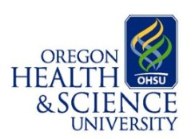Public Health Partnerships Can Increase State Disability Capacity for Healthcare and Health Promotion (OR UCEDD)
December 6, 2013

|
During this time of healthcare transformation, there are opportunities for disability agencies and communities to step in and help direct the changes. At our November 2013 national AUCD meeting, we were challenged to present and discuss ways in which UCEDDs can use low - or no-cost solutions for health activities for their constituents. Our UCEDD at the Oregon Health & Science University (OHSU) has the luxury of working within the same Institute as state-level disability programs, including the Oregon Office on Disability and Health (OODH), which is funded by the Centers for Disease Control and Prevention (CDC). Our programs work together, and leverage our resources and funds to extend to our overall public health partnerships and programs on behalf of Oregonians with Disabilities and their families. Our final thought for all UCEDDs to consider is that when a door opens, it is not enough to just go through it; we must also keep in mind those who are behind us and who have not yet reached the door. Below are some examples from Oregon that may translate to other UCEDDs:
Example 1- increasing access to breast cancer screening for women with disabilities
The CDC developed an educational campaign aimed at improving mammography screening for women with disabilities. Several state-level programs, including OODH, were funded to disseminate the materials and also to increase accessibility (e.g. by educating mammography technicians), as well as to assess and improve the accessibility of facilities themselves. In Oregon, on-site ADA assessments of 75 of our 105 state facilities resulted in a directory of regions and facilities with a standardized guide for women (see our Oregon Mammography Directory at www.oodh.org).
Example 2- Improving access to smoking cessation
Helping smokers quit is an important goal nationwide, and states participate at some level with services such as Quit Lines. In Oregon as with the nation, public health statistics show that 23% of adults with disabilities smoke compared to 17% of other adults. We plan to increase access and use of our state's Tobacco Quit Line by disseminating educational materials targeted at people with disabilities via our community partners. In order to track our progress, we were encouraged to add one disability screening question to the Quit Line intake form, which will enable us to track if the numbers of people with disabilities increase over time. Our Quit Line partners can also track referrals to the program from our disability partners so we can assess how community partners may be integrating tobacco cessation into their client contacts.







